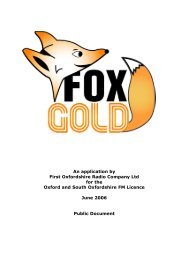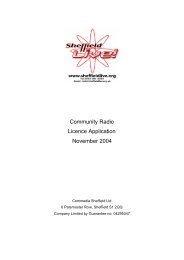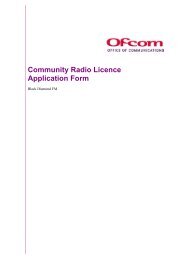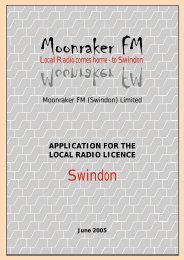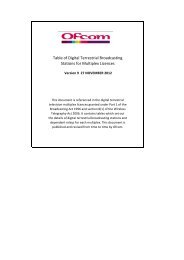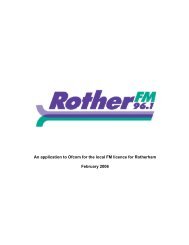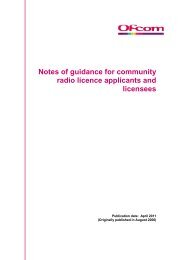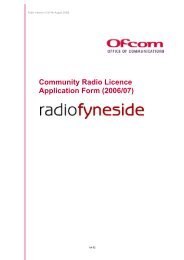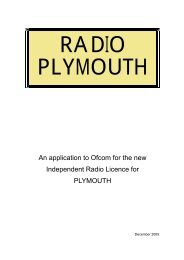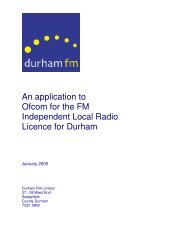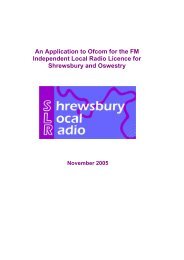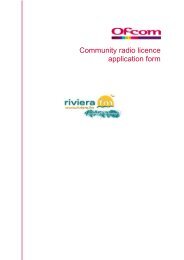UHF2 realignment study - Ofcom Licensing
UHF2 realignment study - Ofcom Licensing
UHF2 realignment study - Ofcom Licensing
You also want an ePaper? Increase the reach of your titles
YUMPU automatically turns print PDFs into web optimized ePapers that Google loves.
3 Regulatory Environment<br />
3.1 Introduction<br />
In this chapter, we review the current regulatory environment with a particular focus on the<br />
following issues:<br />
240689 - 450-470 Study Final Print<br />
Version (Dec08).doc<br />
Actions at an international level including the ITU, European Commission and<br />
the Electronic Communications Committee (ECC).<br />
The development of the UK <strong>UHF2</strong> regulatory environment.<br />
3.2 International Telecommunications Union (ITU)<br />
At the recent ITU World Radio Conference 2007, it was agreed that the 450-470MHz (<strong>UHF2</strong>)<br />
band would be a recognised IMT-2000 band from early 2009. However, it is understood that<br />
Western European regulators would be unlikely to entertain the use of IMT-2000<br />
technologies in the <strong>UHF2</strong> band in the near term owing to the incumbent narrowband use<br />
within the band.<br />
However, in all cases, allocations must comply with internationally agreed allocations defined<br />
under the auspices of the International Telecommunications Union (ITU) and detailed in<br />
Article 5 of the ITU Radio Regulations, if the service concerned is to be protected from<br />
interference from other services in neighbouring countries. This effectively means that from<br />
2009, the UK would need to protect IMT2000 services, either in the UK or internationally<br />
from harmful interference.<br />
3.3 European Regulatory Framework<br />
The last decade has seen a series of regulatory measures resulting in progressive changes<br />
in radio spectrum management and policy in the European Union (EU) through a series of<br />
regulatory measures. These measures enabled decisions to be taken on the availability of<br />
radio spectrum for relevant EU policies, providing legal confidence, mechanisms for radio<br />
spectrum policy development, transparency on spectrum usage and a consolidated<br />
European position in international radio spectrum fora.<br />
The key objective of EU radio spectrum policy is to optimise the use of spectrum, to<br />
maximise its value for society and to avoid harmful interference. 6 Since February 2005, the<br />
Commission has issued a number of policy statements aimed at promoting more flexible use<br />
of spectrum and greater use of market approaches to spectrum management. The<br />
Commission has emphasised the need for “a gradual but systematic liberalisation of radio<br />
spectrum use”. As part of the i2010 initiative the Commission has presented a strategy for<br />
advancing a single market for radio spectrum use in Europe. Recently, as part of the 2006<br />
6 The Radio Spectrum Decision also refers to economic, safety, health, public interest, freedom of expression, cultural,<br />
scientific, social and technical aspects of Community policies.<br />
Page 25<br />
abc



